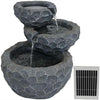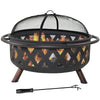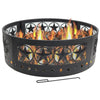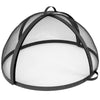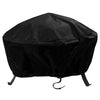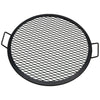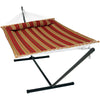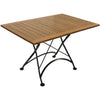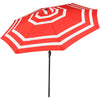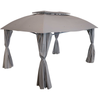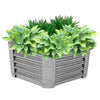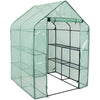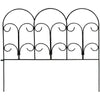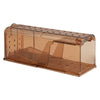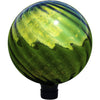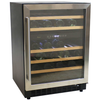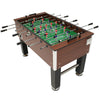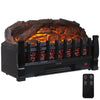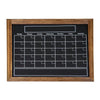Solar power is a useful form of energy that can be used to power a variety of outdoor items including fountains, gazing globes, solar umbrellas, and outdoor lights. It’s better for the environment, cost effective and you don’t have to worry about open flames, torch fuel, or changing light bulbs. However, there is one obvious downside to solar lights. What do you do on cloudy days? This article will explain how solar panels operate and how to keep the lights on during cloudy days.
How Do Solar Panels Work?
All outdoor items that use solar power feature a panel that is used to collect sunlight. This panel is either attached directly to the product or connected to the product via an electrical cord. The panels are positioned in a bright sunny location to collect sunlight during the day and convert it to electricity which is either stored in a special rechargeable battery or used to power the lights or pump. If the product includes a rechargeable battery, the item will charge during the day and store power that can be used during the evening or on days when there is not enough sun. Some solar lights also feature a sensor that allows the light to remain off during the day while the product charges and will automatically turn on during the evening and use the energy that was collected during the day.
Will Solar Panels Charge on Cloudy Days?
Solar panels are greatly affected by weather conditions and cloudy days can present a problem. However, solar panels are still capable of charging during these days. The amount of charging that they are able to do will depend on the type of clouds. If the clouds are thin and scattered, sunlight is still capable of breaking through and the solar panels can get a smaller charge from multiple angles. If the clouds are thick, it is far less likely for light to be able to pierce through and reach the solar panels.
What Should I Do During Cloudy Days?
While it’s true that solar panels are not as effective on cloudy days, there are still ways to keep your lights bright and water fountains flowing. If you live in an area that experiences a number of cloudy days, the most effective way to work around the weather is to select a product with a rechargeable battery and follow a few simple tips to ensure that the panel charges as much as possible. This way there will be power stored that can be relied on at night or during cloudy days.
Tip #1: Large Solar Panel

A larger panel allows more access for sunlight so more energy can be converted to electricity.
Tip #2: High-Capacity Battery

A rechargeable battery allows the item to store surplus energy. Batteries with a higher capacity are capable of storing more energy that can be used during a cloudy day.
Tip #3: Place the Item in a Well-Lit Area
Be sure to place the object in an area that receives plenty of sunlight. Assuming you live in the Northern Hemisphere, place the object so the panel is facing south and if possible angle the panel towards the sun. Make sure there are no trees, buildings, or shrubs, blocking the panel.
Tip #4: Allow Time for Charging
Once the battery runs out, you will need to wait until the battery is charged again. This can vary based on the panel and the battery used. Typically, the panel must be placed in an area that receives direct sunlight for 6 to 8 hours before the product is ready to use again.
Tip #5: Keep the Panel Clean

Like obstructions and shade, dirt can also impact the efficiency of your solar panel. Dust and debris can keep your panel from absorbing sunlight. Fortunately, a little light maintenance will keep your panel clean and functional. Simply wipe the panel with a damp, lint-free cloth and dry any water spots.
Don’t let cloudy days darken your view on solar power. Solar power is a convenient way to light up your garden and power fountains. With a little planning for days when the sun is scarce, you can find a number of ways to use solar powers in your backyard.

